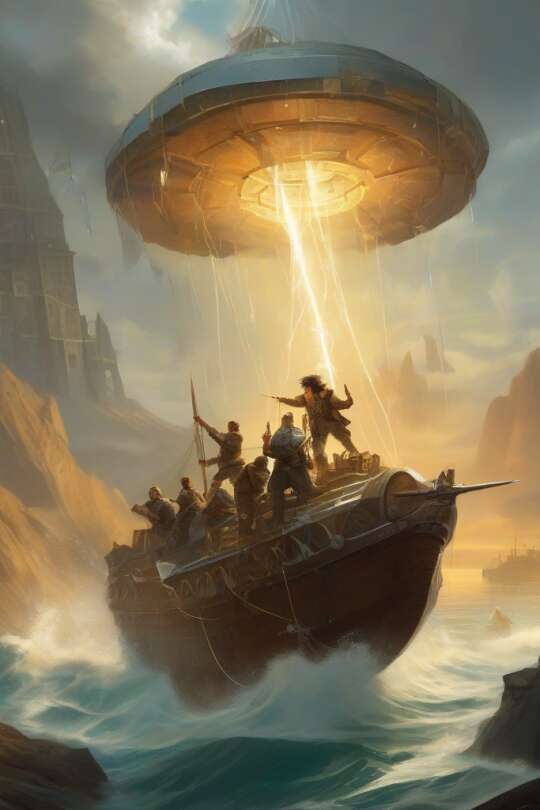
The Last Wind Engine
About the Story
When a stolen stabilizer sends the floating isles into chaos, a young mechanic and a ragged crew chase it to a fortified forge where factions conspire to weaponize weather. In a tense climax at Stormforge, the mechanic risks everything to retune the core into a distributed network, forcing a fragile compromise under a sky that still remembers how to warn.
Chapters
Related Stories
The Aster Key
A salvage engineer carries half of an ancient key into a conflict that forces a living mechanism to choose between centralized authority and communal consent. As machines and men press for control, she binds herself to the archipelago's Heart to reforge the work of stewardship into a public practice, and fragile communities begin to rebuild.
Echoes of the Drift
A salty, urgent adventure: salvage diver Juno Maris finds an iridescent shard tied to an ancient Anchor Spire that keeps drifting isles in place. Hunted by a profit-driven fleet, she and a ragged crew race to decode the shard, confront a moral ultimatum, and attempt a communal chorus to tame a machine that feeds on memory.
Keeper of the Halcyon Run
A young horologist named Tamsin Hale defends her island's luminous tide from a corporation that would harvest its memory. With a mechanical companion, a gifted chronoglass, and a band of uneasy allies she learns the weight of stewardship and the power of patient, cunning resistance.
Tetherfall: A Voyage of Ropes and Sky
When the crystalline Anchorstone that steadies the Shards is stolen, tether-rigger Ari Voss must chase it through fog-choked channels and the iron heart of the Cairnspike. With a ragged crew and a stubborn promise to protect her island, she faces betrayals, a calculating director, and the cost of returning a people's song.
The Lantern of Tethys
In the archipelago of Ventancia, young mechanic Asha takes a lantern stolen by tide and greed back to life. Given a strange brass “Aequor Eye” and a small automaton, she must outwit a salvage baron, learn to read the sea, and return the lamp to the Harbor Spire—restoring trade and teaching a town to listen to tides.
Frequently Asked Questions about The Last Wind Engine
What central conflict drives The Last Wind Engine and how does it unfold across the six chapters ?
A stolen stabilizer throws the floating isles into chaos. Nia Kestrel and her crew chase it from vault to Driftstone and Stormforge, shifting the plot from retrieval to a fight over whether the Engine will be centralized power or a shared network.
Who are the main characters in The Last Wind Engine and what roles do they play in the quest to recover the core ?
Nia Kestrel is the mechanic protagonist; Rook Havel provides piloting and contacts; Niran Val deciphers lattices; Ada Mire leads the Reclaimers; Sorin and Mira are local technicians. Each shapes the mission and its moral choices.
How does the worldbuilding of floating isles and wind lanes affect the story's stakes and setting ?
Floating isles and mapped wind lanes make weather control a literal lifeline. When the core is taken, drifting islands, disrupted trade, and diverted rainfall create immediate danger for ports and crops, raising urgency for recovery.
What is Stormforge in The Last Wind Engine and why is it pivotal to the climax ?
Stormforge is the fortified workshop where the Reclaimers intend to mount the casement into an amplification lattice. Its completion could let a faction steer regional weather, turning the Engine into a tool of redistribution—or a weapon.
How does the story explore the technical concept of retuning the Wind Engine into a distributed network ?
Nia uses harmonic tuning and Niran plants probes and anchors across nodes to require multi-node consent. The retune transforms a single-control core into a chorus-driven system, demanding coordination and shared guardianship.
For readers who enjoy adventure with ethical complexity, what themes does The Last Wind Engine emphasize ?
The novel combines action with questions about power, decentralization, responsibility and redemption. It asks who should govern vital systems, whether redistribution justifies force, and how communities build shared stewardship.

